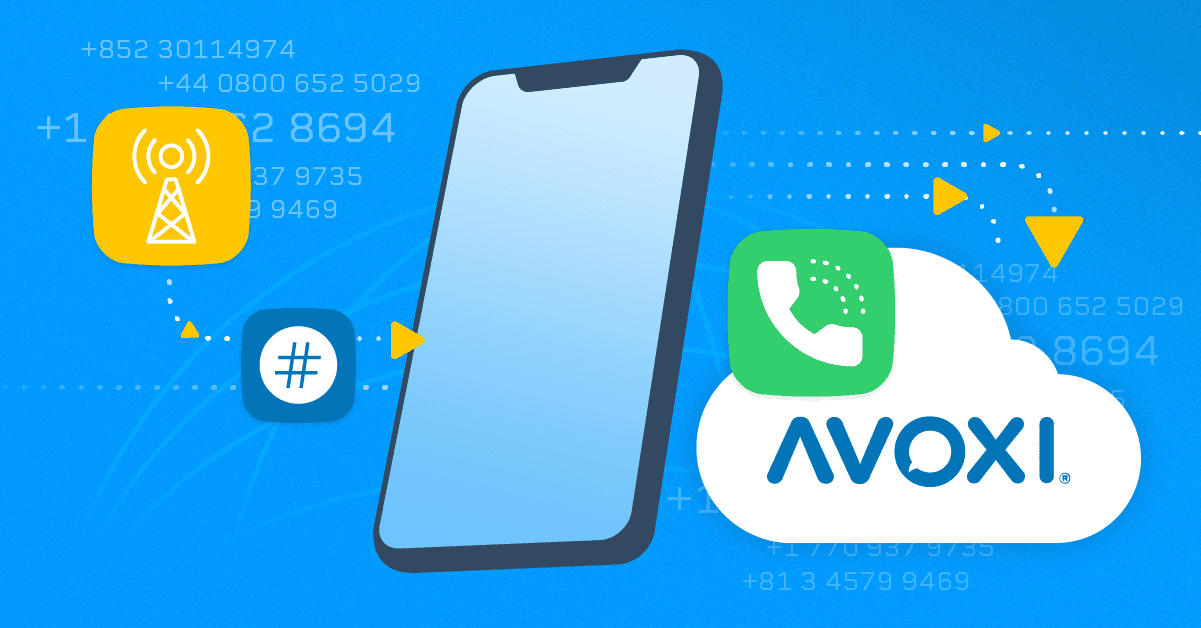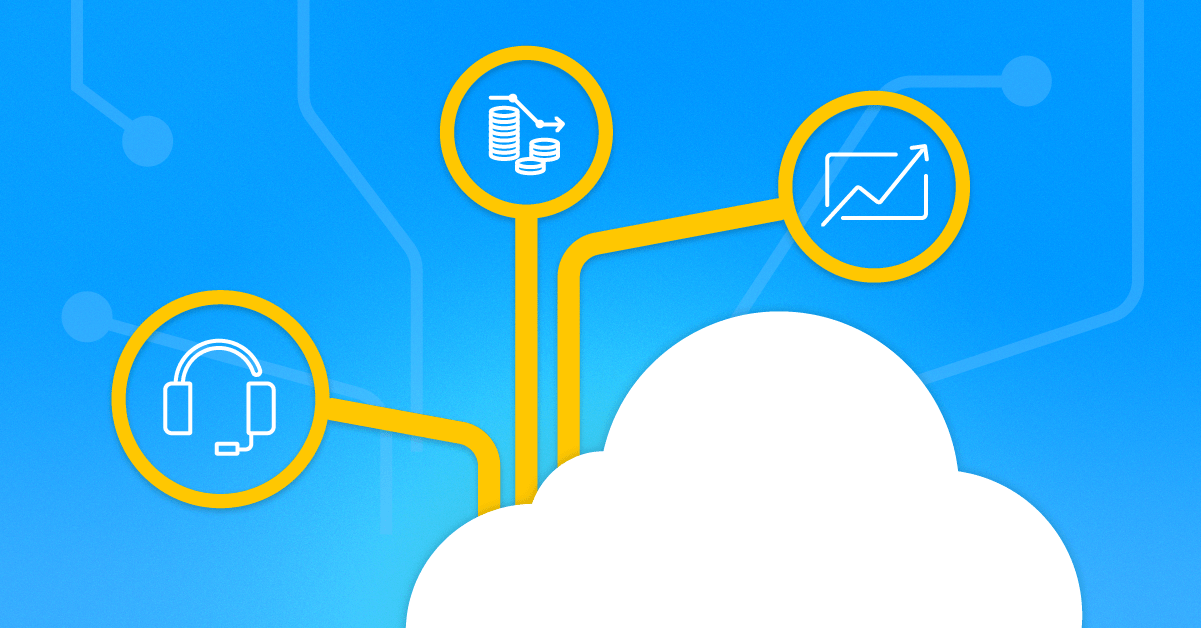Hosted PBX vs. VoIP PBX: A 2025 Enterprise Guide
Enterprise communication teams face a high-stakes choice: keep voice systems on-premise or migrate to the cloud. The wrong approach can create cost overruns, security risks, or scaling headaches across regions.
This guide compares hosted PBX, on-premise VoIP PBX, and SIP trunking across core business needs. You’ll learn how each setup handles deployment, compliance, and growth—and what to consider before you commit.
Understanding hosted PBX, on-premise VoIP PBX, and SIP trunking
Modern business communications often involve hosted Private Branch Exchange (PBX), on-premise systems, or Session Initiation Protocol (SIP) trunking. Each serves different needs depending on your infrastructure and goals. Understanding how they differ helps you choose the right solution based on factors like control, scalability, and deployment complexity.
VoIP PBX (also known as IP PBX) is a business phone system that routes calls over internet protocols, unlike traditional PBX systems. This umbrella term includes two primary deployment models:
- Hosted systems (or cloud PBX) managed by service providers in the cloud
- On-premise systems controlled by your in-house IT team
SIP trunking connects your PBX phone system to the Public Switched Telephone Network (PSTN) over the internet. It replaces traditional phone lines (PRI/T1 circuits) with digital trunks that carry voice traffic over IP networks. Both hosted and on-premise systems use SIP trunking for external connectivity.
| What it is | Cloud-based phone system | In-house phone system | PBX-to-PSTN connection |
| Management | Service provider handles operations | Internal IT team manages | Carrier manages connectivity |
| Deployment | Remote setup via portal | On-site hardware required | Software integration |
| Typical costs | $20–$50/user/month + setup fee | $200–$500/user + maintenance and hardware cost | $15–$30/trunk/month |
| Scalability | Instant user additions | Growth requires hardware upgrades | Trunk-based scaling |
| Reliability | Provider SLA + internet connection | Your infrastructure + internet connection | Carrier network + internet connection |
| Security | Provider manages compliance | Your team sets policies | Requires encryption setup |
| Best for | Remote work teams, rapid growth | Control requirements, compliance | Modernizing existing PBX |
If you already have on-premise PBX, SIP trunking lets you modernize your existing hardware without a complete overhaul. For new setups or expansion into new markets, the flexibility of hosted systems or hybrid setups can speed deployment and streamline your vendor stack.
What is hosted PBX?
Hosted PBX systems operate from provider-managed data centers, delivering phone service over the internet. Hosted PBX providers like AVOXI manage infrastructure, security, and maintenance while you configure users and features through a web portal.
Adoption continues to grow across mid-sized and enterprise organizations. In 2024, more than 68% of global businesses used cloud-based phone platforms, including hosted PBX systems, to support distributed teams and streamline communication infrastructure.
Advantages:
- Deployment to new locations without installing hardware
- Instant scaling of users based on business needs
- Elimination of capital expenses for equipment
- Access to built-in integrations with customer relationship management (CRM) and unified communications platforms
- Automatic updates and security patches
Disadvantages:
- Dependence on internet connectivity and provider reliability
- Limited customization options
- Provider feature constraints
- Shared infrastructure with other customers
Hosted PBX suits organizations that prioritize speed over control. If you're opening global offices, supporting remote work teams, or consolidating telecom vendors, cloud-based systems reduce complexity while maintaining professional capabilities like voicemail, call recording, and advanced features.
What is on-premise VoIP PBX?
On-premise VoIP (Voice over Internet Protocol) PBX systems combine IP-based calling with local infrastructure control. Your IT team manages servers, software, and security while maintaining complete system oversight. IP PBX systems connect to IP phones, softphones, and mobile devices and support analog phone integration through gateways.
Advantages:
- Customized call routing and feature configuration
- Internal control over security policies and data handling
- Direct integration with internal business systems
- Elimination of per-user subscription fees
- Alignment with specific compliance requirements
Disadvantages:
- Hardware purchase and maintenance at each location
- IT resource allocation for system management
- Internal handling of updates, backups, and troubleshooting
- In-house design of redundancy and disaster recovery systems
On-premise systems work best when you need detailed control or operate in highly regulated industries. They also make sense if you have existing telecom infrastructure investments or dedicated IT teams that can manage complex deployments, including voicemail systems, auto attendant features, and call center functionality.
What is SIP trunking?
SIP trunking connects your PBX system to the Public Switched Telephone Network through internet protocols. It replaces traditional phone lines with digital connections that carry voice traffic alongside your data.
Advantages:
- Telecom cost reduction through elimination of physical phone lines
- Voice and data consolidation over a single internet connection
- Scalable calling capacity without hardware changes
- International call support through single providers
- Hybrid deployment flexibility for legacy and new systems
Disadvantages:
- Dependence on robust internet connections with Quality of Service (QoS) controls
- Reliance on carrier network reliability
- Internal configuration requirements for security and call routing
- Potential bandwidth upgrades for high call volumes
SIP trunking provides flexibility for businesses that want to modernize gradually. It lets you connect existing PBX systems to VoIP networks while maintaining current workflows and user training.
How to choose between VoIP PBX vs. traditional PBX
The right phone system depends on your current infrastructure, growth plans, and operational requirements. While VoIP phone systems offer significant advantages over traditional PBX systems, you should consider these factors when evaluating PBX solutions:
1. Existing infrastructure and integrations
Your current IT stack will significantly influence your PBX system selection. If you have servers and networking equipment in place or deeply integrated legacy telecom, you may lean toward an on-premise setup. But if you're migrating to the cloud or consolidating business tools, hosted options can save time and costs.
Deployment options:
- On-premise PBX runs on your physical infrastructure and stays under your complete control.
- Hosted PBX is cloud-based and provider-managed, requiring little to no on-site setup.
- Hybrid deployments combine both, offering flexibility for remote teams, global offices, or staged migrations.
Integration considerations:
Integration capabilities vary significantly between deployment models. Hosted PBX platforms typically include pre-built connectors for popular CRM, UCaaS (Unified Communications as a Service), and support platforms, reducing implementation time and costs. On-premise systems offer deeper customization options but require more development for third-party integrations.
💡Did you know? AVOXI’s hosted platform supports native integrations with CCaaS (Contact Center as a Service), CRM, and UCaaS tools, allowing you to connect applications like Salesforce or Microsoft Teams without custom development. That’s especially helpful if you're trying to reduce IT dependency or standardize voice workflows across global teams.
2. Company size and scalability
The size of your organization—and how fast it's growing—should guide your choice between hosted and on-premise systems. A setup that works for a 50-person support team in one location may not scale easily across 10 global offices.
What to consider:
- Hosted PBX supports rapid growth without physical infrastructure. You can add new users, locations, or remote teams in minutes through your provider’s portal.
- On-premise PBX can work well for large, centralized teams, but may hit limits as your business expands. Scaling requires new hardware, licenses, and IT resources.
- SIP trunking offers the flexibility to scale calling capacity without replacing your core system. You can increase trunk lines based on call volume, instead of adding physical phone lines.
For remote work and distributed teams, cloud-based accessibility and softphones on mobile devices offer significant benefits. Centralized organizations, however, may prefer on-premise control and customization. International expansion often favors hosted solutions for regulatory compliance and local phone number provisioning across multiple countries.
💡Pro tip: Plan for peak usage, seasonal variations, and geographic expansion when evaluating scalability. Some hosted providers impose concurrent call limits or charge penalties for burst capacity, so verify these details during vendor selection.
3. Budget and total cost of ownership (TCO)
The initial price rarely reflects long-term costs—factor in all expenses when comparing VoIP providers and PBX solutions.
Hosted PBX subscription fees typically cost $20–$50 per user/month, plus setup charges and feature add-ons. This predictable pay-as-you-grow model appeals to companies that want to avoid large capital investments while gaining access to video conferencing, call recording, and auto attendant capabilities. However, advanced features, analytics, or international calling can increase costs.
On-premise VoIP PBX requires a substantial upfront investment, typically $200–$500 per user for hardware and installation. You'll also need software licensing, maintenance contracts, and dedicated IT staff for system management. Over time, these systems often prove more economical for large, stable organizations, especially when factoring in upgrade cycles and endpoint costs.
SIP trunking costs depend on usage patterns. They can include per-trunk or per-minute fees, along with setup and configuration charges, bandwidth upgrades for call quality, and integration costs with existing PBX systems. For many small to mid-sized businesses (SMBs), this is a cost-effective way to modernize legacy landline systems.
💡Pro tip: Consider hidden costs like training, compliance audits, and disaster recovery. Verify upfront whether features like call recording, advanced capabilities, or international calls are included in base pricing, as some hosted providers charge separately.
4. Compliance and reliability
For many businesses, voice systems handle more than internal calls—they support customer service, sensitive transactions, and regulated communications. That makes security, reliability, and compliance vital considerations from day one.
Hosted PBX providers typically offer baseline protections such as:
- Support for compliance frameworks like Systems and Organization Controls 2 (SOC 2), Health Insurance Portability and Accountability Act (HIPAA), and General Data Protection Regulation (GDPR)
- Standard encryption (TLS/SRTP) and geographic redundancy
- Service level agreement (SLA)-backed uptime that still depends on your internet connection quality
On-premise systems give your team complete control over security policies and data handling. This approach requires internal compliance audits, documentation, and oversight, but it allows you to meet specific regulatory requirements that generic cloud solutions might not address.
You'll need to design and maintain internal redundancy and backup systems, assuming full responsibility for security breaches and downtime.
SIP trunking security relies heavily on carrier capabilities. Quality providers offer:
- Encrypted transport and fraud monitoring
- Network prioritization for call quality
- International compliance support
- Backup routing across multiple providers
💡Did you know: AVOXI supports enterprise-grade security with TLS/SRTP encryption, SOC 2 compliance, and built-in call failover across global points of presence (PoPs). For businesses navigating HIPAA, GDPR, or multi-country regulations, AVOXI simplifies voice compliance without sacrificing flexibility or reach.
Choosing the right VoIP solution for your enterprise
VoIP phone systems offer clear advantages over traditional PBX systems, but the ideal deployment model depends on your business needs.
Selecting a VoIP setup that aligns with your priorities, compliance obligations, and growth strategy is crucial.
- Choose hosted PBX for fast deployment, global reach, and minimal IT overhead.
- Choose on-premise PBX if you need control, want to manage your infrastructure, and operate in a centralized environment.
- Use SIP trunking to extend the lifespan of an existing system or gain flexible voice capacity without overhauling your tech stack.
To make the best decision, evaluate your current infrastructure, involve stakeholders from IT, operations, and compliance, and weigh near-term requirements and long-term scalability.
A flexible VoIP solution should meet today’s business needs while preparing for future growth. AVOXI works with enterprise teams to help align voice infrastructure with global requirements, simplifying management across regions, teams, and regulatory landscapes for effortless operation.
Ready to explore how hosted PBX or SIP trunking can transform your communications infrastructure? Schedule a demo with AVOXI to see how our global platform supports complex enterprises with flexible, compliant, and scalable voice solutions.
FAQ about VoIP PBX
Traditional PBX systems rely on physical phone lines and hardware, often limiting flexibility. VoIP PBX routes calls over the internet and supports remote access, integrations, and faster scaling. Additionally, VoIP systems simplify global deployment and reduce reliance on traditional telecom services.
Key factors include setup fees, subscription or licensing costs, hardware and maintenance (if applicable), integrations, and training. Hosted systems typically reduce upfront spend but may charge per feature or user. On-premise systems have higher initial costs and long-term support responsibilities.
Enterprises should enforce encryption (TLS/SRTP), ensure secure endpoint access, segment voice traffic from data networks, and monitor for fraud or unusual call activity. Hosted platforms handle much of this security, while on-premise systems require internal security management and regular updates.
Additional Resources to Help You Get the Needle Moving

PSTN Replacement
Guide to Voice Termination Services

Retain Phone Number
International
Number Porting

Virtual Phone Line
Benefits of
SIP Trunking

